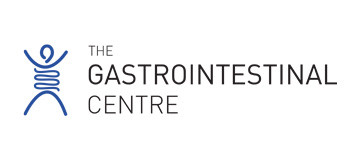CONSENT EUS
An endoscopic ultrasound (EUS) is where the doctor uses an instrument called an echoendoscope, which has an ultrasound probe at its tip to examine the wall layers (inside and outside) of the upper or lower gastrointestinal tract. It also provides excellent pictures of your pancreas, bile ducts and organs in your chest.
An echoendoscope is a long, thin, flexible tube with a small camera and light attached which allows the doctor to see the pictures of the inside and outside of your gut on a video screen. The scope bends, so that the doctor can move it around the curves of your gut.
The EUS allows a fine needle biopsy (sample) of tissue to be taken inside or outside the wall of the gut. This needle is passed through the scope, and using the ultrasound as a guide, it is passed into the tissue of concern.
The EUS procedure is mostly used to:
Diagnose tumours of the oesophagus, stomach, duodenum, pancreas and bile ducts.
Diagnose some tumours of the lung.
Diagnose diseases of internal organs including pancreatitis or lesions of the pancreas.
Detect bile duct stones, including gallstones.
Assess abnormalities of the walls (inside and outside) of the gut.
Collect fluid samples from the lungs or abdominal cavity.
This procedure has 2 possible points of body entry, through a patient’s mouth or anus, depending on the disease under investigation.
You should plan on 2 to 3 hours for waiting, preparation and recovery. The procedure itself usually takes anywhere from 20 to 60 minutes.
This procedure may or may not require a sedation anaesthetic.
I acknowledge that the doctor has explained:
My medical condition and the proposed procedure, including additional treatment if the doctor finds something unexpected. I understand the risks, including the risks that are specific to me.
The anaesthetic/sedation required for this procedure. I understand the risks, including the risks that are specific to me.
Other relevant procedure/treatment options and their associated risks.
My prognosis and the risks of not having the procedure.
That no guarantee has been made that the procedure will improve my condition even though it has been carried out with due professional care.
The procedure may include a blood transfusion.
Tissues and blood may be removed and could be used for diagnosis or management of my condition, stored and disposed of sensitively by the hospital.
If immediate life-threatening events happen during the procedure, they will be treated accordingly.
I have been given the following Patient Information Sheet;
Endoscopic Ultrasound (EUS) & Fine Needle Biopsy.
I was able to ask questions and raise concerns with the doctor about my condition, the proposed procedure and the risks, and my treatment options. My questions and concerns have been discussed and answered to my satisfaction.
Uncommon risks include;
About 2 people in every 100 can get an infection from a fine needle biopsy of a cyst. Antibiotics are given during and after the procedure to reduce the risk of this complication.
About 1 person in every 100 can experience pancreatitis. This usually settles without specific treatment but extremely rarely can cause death.
About 2 people in every 1000 can have minor bleeding from the gut where the fine needle biopsy was taken. This can usually be stopped through the endoscope. Rarely, surgery is needed to stop the bleeding.
About 1 person in every 1000 can accidentally get a tear or hole (perforation) through the wall of the gut. This can cause a leak of stomach contents into the abdomen. Surgery may be needed to repair the tear or hole.
Missed growths in and around the gastrointestinal tract.
Your procedure may not be able to be completed.
Heart and lung problems such as heart attack or vomit in the lungs causing pneumonia. Emergency treatment may be necessary.
Damage to your teeth or jaw due to the presence of instruments in your mouth.
“Dead arm” type feeling in any nerve, due to positioning with the procedure – usually temporary.
An existing medical condition that you may have getting worse.
Rare Risks include;
Bacteraemia (infection in the blood). This will need antibiotics.
Stroke resulting in brain damage.
Anaphylaxis (severe allergy) to medication given at the time of procedure.
Death as a result of complications to this procedure is rare.
 The Gastrointestinal Centre
The Gastrointestinal Centre